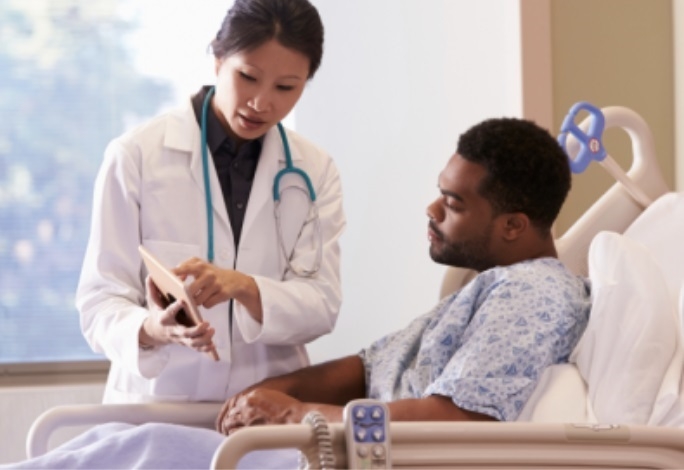What to ask your doctor before taking opioid painkillers
U.S. Food and Drug Administration (FDA)
Every patient should ask questions when getting a new prescription. This is especially important when your doctor, dentist or other health care professional prescribes you an opioid pain medicine, such as hydrocodone, oxycodone or morphine. Opioid medicines approved by the U.S. Food and Drug Administration can be used to treat certain kinds of acute and chronic pain. They also can have very serious side effects.
What should you ask your health care professional?
• Why do I need this medication; is it right for me? This conversation could begin with: “My condition is causing pain. How long can I expect the pain to last? What medication are you giving me?” If it’s an opioid pain medicine, ask: “Are there non-opioid options that could help with pain relief while I recover?”
• If your doctor thinks your pain is best managed with a prescription opioid, then ask, "How long should I take this medication?" Find out when, and how, to stop using opioid pain medicines.
• Ask your health care professional to prescribe the lowest dose possible for the shortest time needed and the smallest quantity you may need.
• Also, ask when you should follow up with your health care professional to discuss whether the medication is controlling your pain.
What are the side effects of this medication?
Prescription opioid pain medicines can be safe and effective when used correctly for a medical condition and under a health care professional’s supervision. But they can cause serious side effects if not used correctly. Medical use of these products in ways that are different from what was prescribed or use for nonmedical reasons can lead to dependence, addiction and even death.
Some side effects of opioid pain medicines include dizziness, drowsiness, weakness, nausea and constipation. Learn to identify these side effects so you and your family will know when to call a doctor, go to the hospital or seek emergency medical help (such as calling 911).
For more information, ask your pharmacist if your prescription comes with a Medication Guide (paper handouts that come with many prescription medicines).
How can I reduce the risk of potential side effects from this medication?
Take your medicine exactly as prescribed. If you are still feeling pain, call your health care professional; do not take an extra dose.
What if I have a history of substance use disorder?
Tell your health care professional about any history you have had with substance use disorder involving drugs or alcohol. You should also tell them if anyone in your family has had a problem with substance use disorder involving drugs or alcohol.
What about the other medications I’m taking?
It is very important that you tell your health care professional about other prescription and nonprescription (over-the-counter, or OTC) medicines you are taking, especially those prescribed to you to treat anxiety, sleeping problems or seizure. Even remedies you take only occasionally could interact with the opioid pain medicine. Ask your health care professional or pharmacist about possible interactions.
How should I store my opioid pain medicine?
If you have children at home — from toddlers through teenagers — consider a lockbox for your medications. Even one accidental dose of an opioid pain medicine meant for an adult can cause a fatal overdose in a child.
Be aware that other people, including teenagers and visitors, may seek out opioid pain medicines for nonmedical use in your home. They may look in your bathroom medicine cabinets searching for these medicines.
What should I do with unused opioid pain medicine?
Dispose of unused medicines promptly. Your leftover opioids can be targeted by people who you’d never expect to take it: friends, relatives and even your children and their friends. Learn how to dispose of unused medications here: https://www.fda.gov/consumers/consumer-updates/where-and-how-dispose-unused-medicines.
Find a drug take back location bear you where you can drop off unwanted or unused medication at this link:
https://apps.deadiversion.usdoj.gov/pubdispsearch/spring/main;jsessionid=eiuSB6WN8ds4IAwukxFAx56HsGaUfvp-PfSNVrF0.web1?execution=e1s1.
If there is no drug take-back program near you, the FDA has created a list of opioid pain medicines we recommend you flush down the toilet when they’re no longer needed. This way, you can avoid accidental exposures to opioid pain medicine in the home. View the medication "flush list" here: https://www.fda.gov/drugs/disposal-unused-medicines-what-you-should-know/drug-disposal-fdas-flush-list-certain-medicines.
Also, check with your pharmacist. Some pharmacies have on-site medicine drop-off boxes, mail-back programs and other ways to help you safely dispose your unused medicines.
Can I share this medication with someone else?
No. Your prescription is for you. Your health care professional considers many factors when prescribing opioids. What’s safe for you might cause serious side effects or even an overdose for someone else.
Should I have naloxone on hand (to reverse the effects of opioids?
Talk with your health care professional about naloxone, a drug that can reverse the effects of an opioid overdose and save lives. The labeling for opioid pain medicines already recommends that patients at high risk of overdose should be prescribed naloxone along with the opioid. In many cases it makes sense to be prepared for potential problems by keeping naloxone in your home.
Some naloxone products are safe and effective for nonprescription use; other drugs may require a prescription. Many states allow “standing orders,” which means that consumers can get naloxone directly from a pharmacist, without having a prescription. This allows access to naloxone to anyone who thinks they might need it, either for themselves or for someone else who might be at risk for an overdose.
Play it safe.
Ask your health care professional these questions before taking opioid pain medicines.
